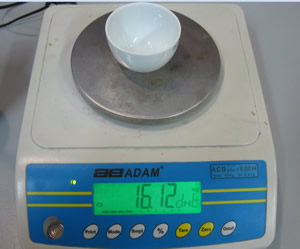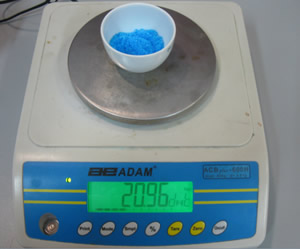Empirical formulae
Copper sulfate is a crystalline
solid that has many water molecules embedded in its lattice structure.
The number of water molecules per copper sulfate particle, depends
on the conditions the crystals of copper sulfate are in.
The formula of hydrated copper sulfate is CuSO4. XH2O. The number X can
vary.
In this activity we will work out X in a given sample of hydrated copper sulfate.


Heat the sample again for a further 5 minutes and repeat until no further mass loss is recorded.


1) Fill the table below.
| Item | Mass (g) |
| Empty crucible | |
| Crucible and hydrated copper sulfate | |
| Mass of hydrated copper sulfate | |
| Mass of crucible and anhydrous copper sulfate | |
| Mass of anhydrous copper sulfate | |
| Mass of water removed. |
2) Calculate the amount, in mole, of anhydrous copper sulfate present in your sample. 3) Calculate the mass of water present in the hydrated copper sulfate sample.
4) Calculate the amount, in mole, of water present in your sample.
5) Calculate the simplest mole ratio between copper sulfate and water
6) Calculate X

